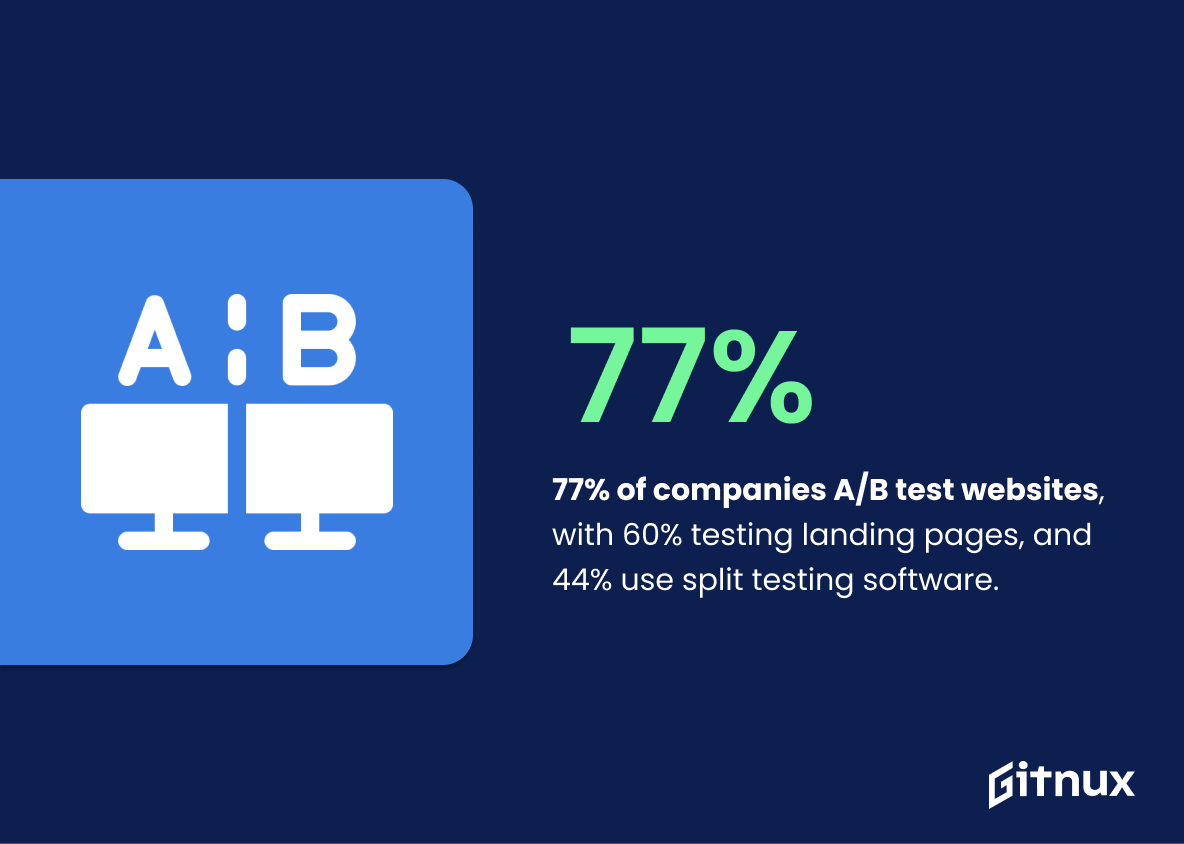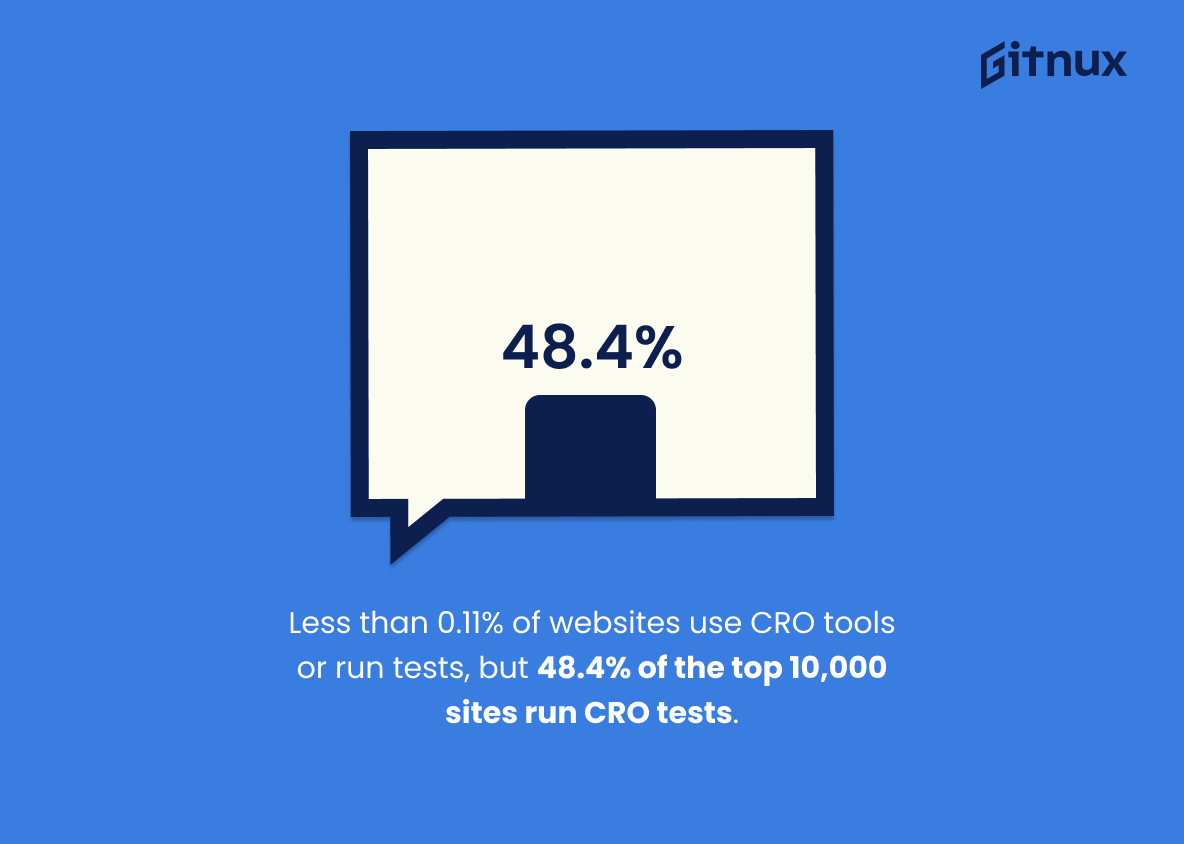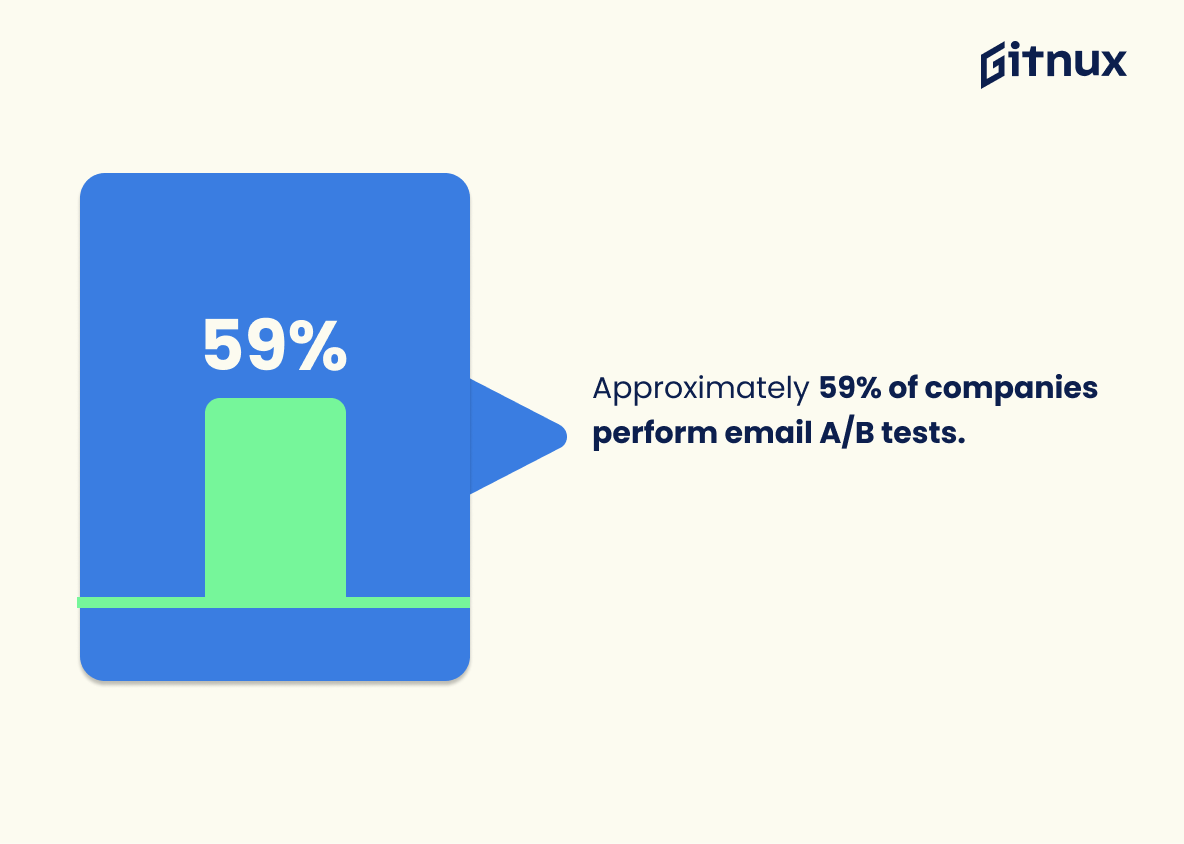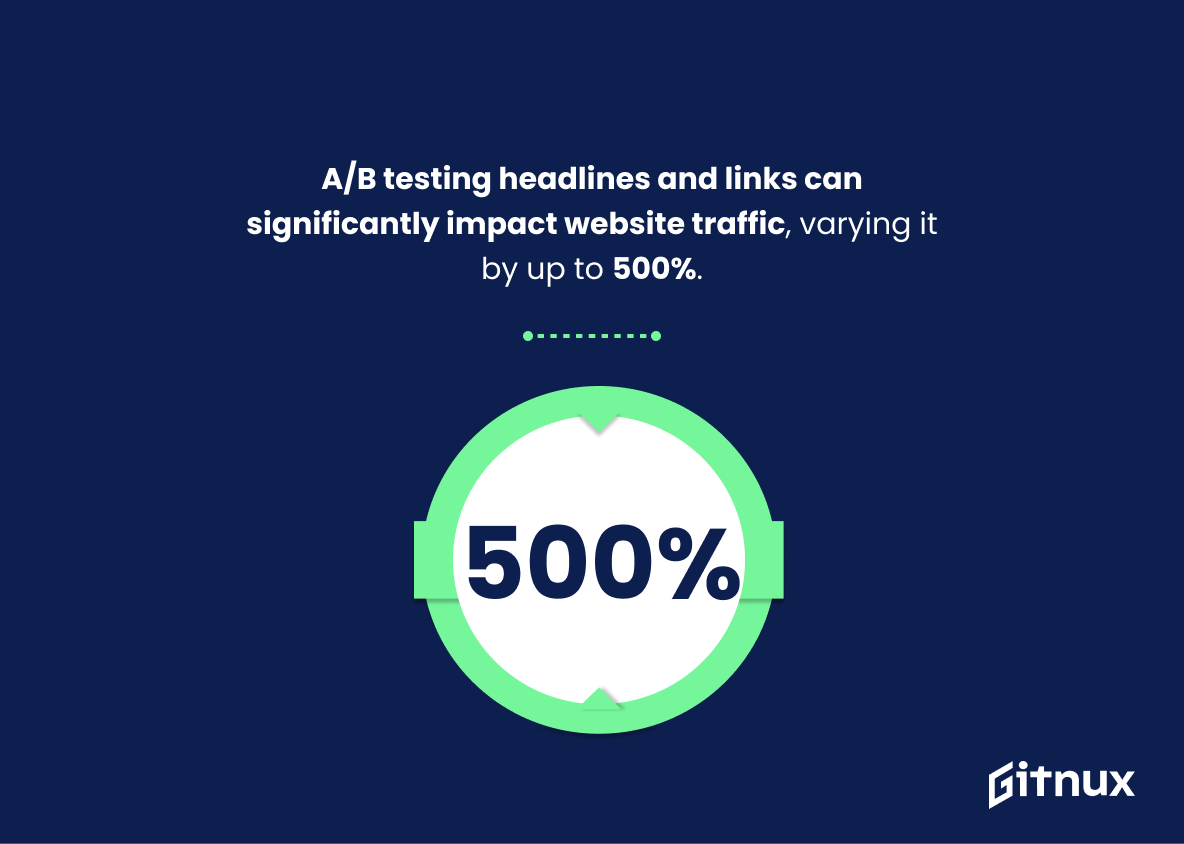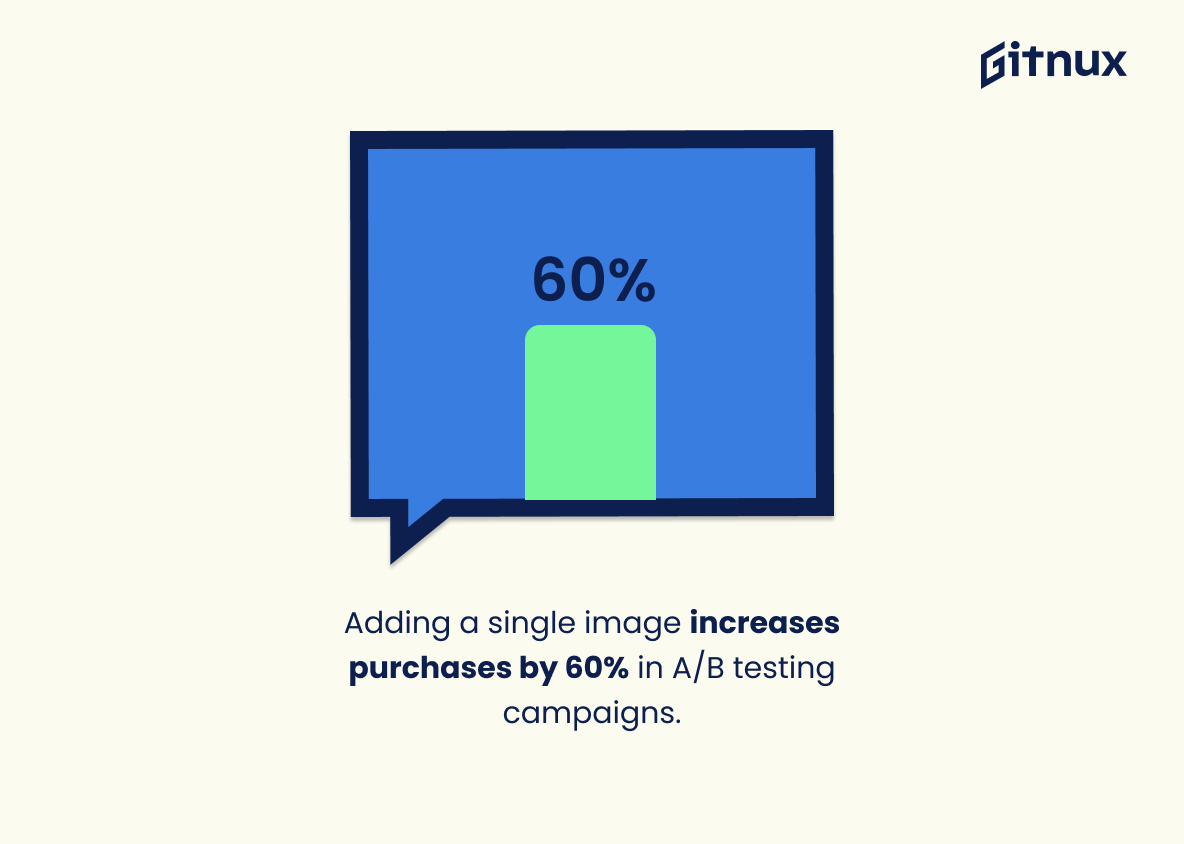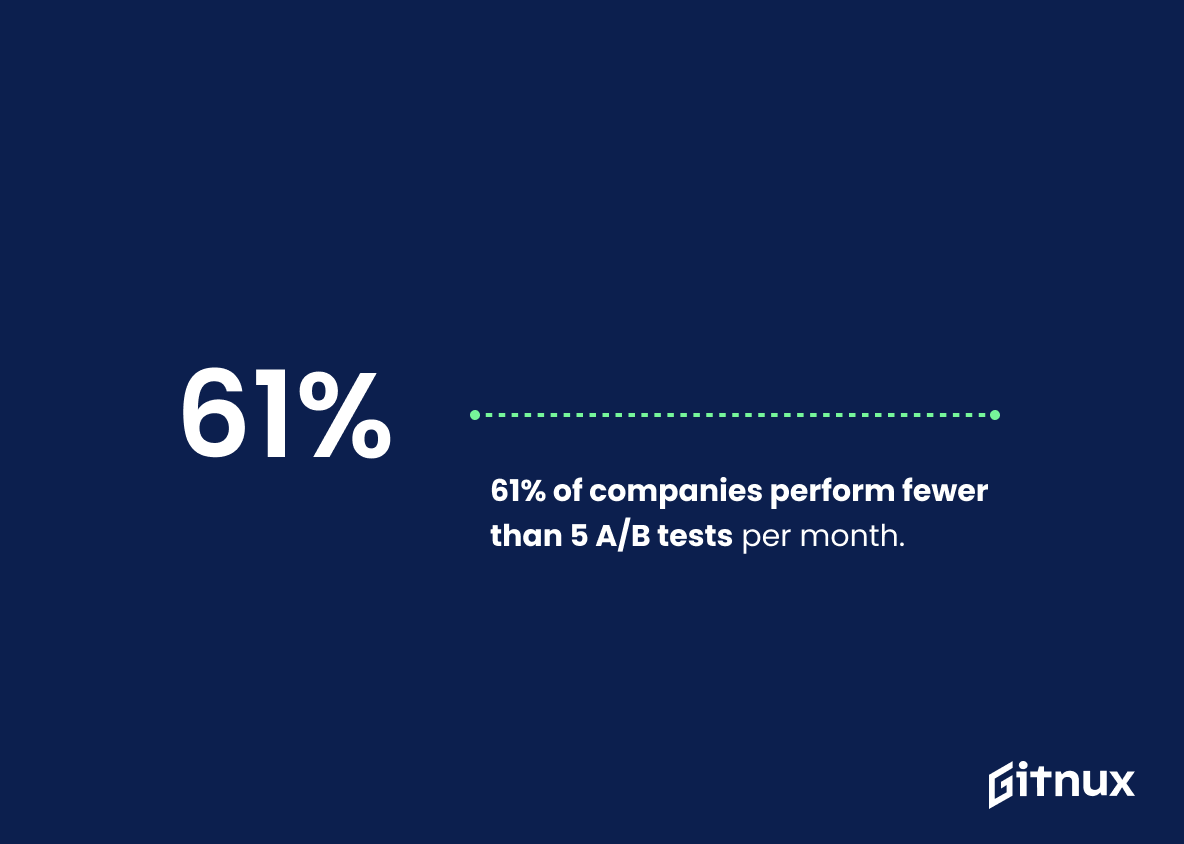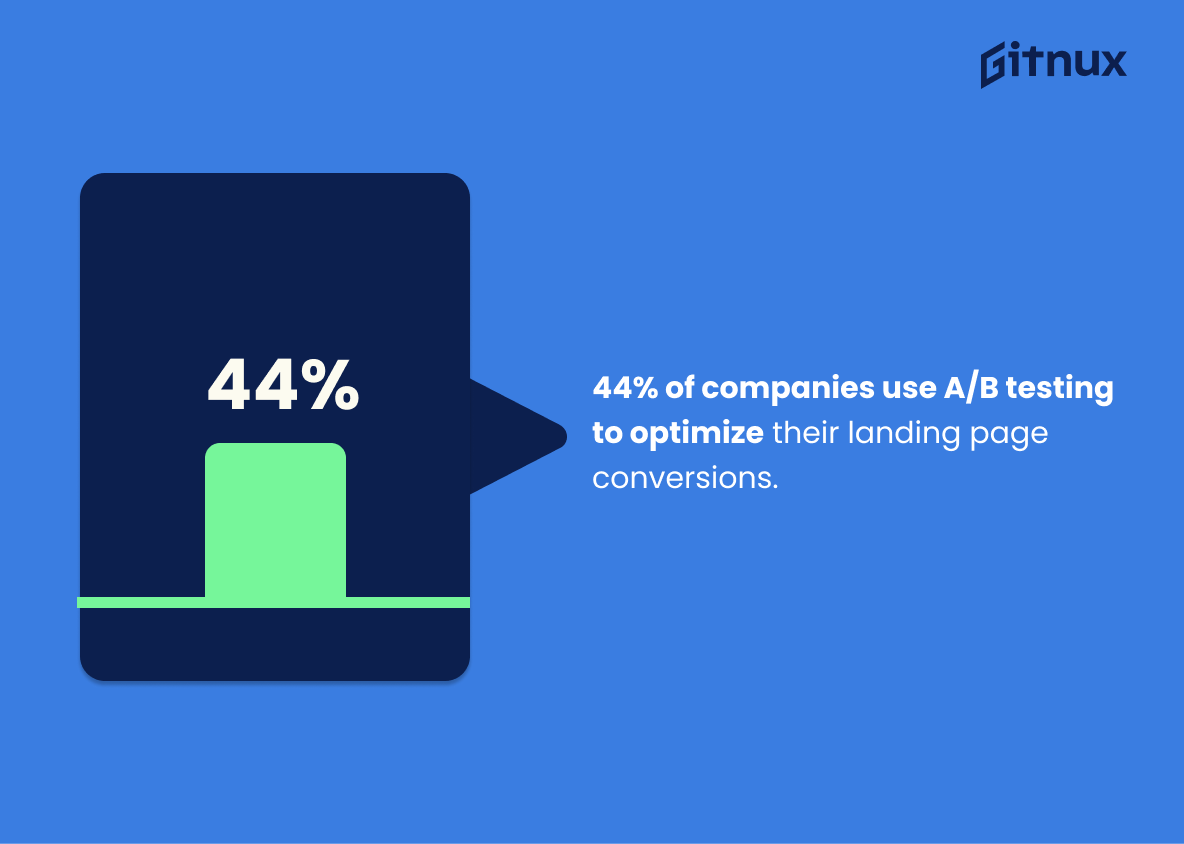A/B testing is a powerful tool for marketers and website owners to understand how users interact with their product. By comparing two versions of a web page or app, A/B testing allows you to measure which version performs better. Through A/B testing, you can make informed decisions about what changes to make to your product to improve user experience and increase conversions.
In this blog post, we will explore the latest A/B testing statistics, and how it can help you optimize your product.
Check out our latest Digital Marketing Industry Statistics
A/B Testing: The Most Important Statistics
Only 7% of companies believe it’s difficult to perform A/B tests.
Over 50% of marketers use A/B testing to boost conversion, and the global A/B testing software market is forecast to be worth $1.08 billion by 2025.
A/B Testing: Statistics Overview
77% of companies are running A/B testing on their website, 60% on their landing pages, and 44% use split testing software. Only 7% find it difficult, showing that A/B testing is invaluable for improving website conversion rates.
A/B testing helps companies make smart and profitable choices based on customer feedback. By testing different versions of a website or landing page, companies can see which version performs better and make changes accordingly. This helps them optimize their website and increase conversion rates.
Less than 0.11% of websites are using CRO tools or running tests, however, 48.4% of the top 10,000 sites are running CRO tests.
This shows that while only a small percentage of websites are using CRO tools or running tests, the top 10,000 sites are running CRO tests at a much higher rate. It indicates that the top performers are taking advantage of A/B testing to improve their user experience and customer feedback.
Most marketers believe SEO is important, but only 65% actively test their strategy, giving those who do test an advantage over those who don’t.
A/B testing statistics are important for marketers to understand because they provide insight into how successful their SEO strategy is. By running tests, marketers can quickly find tweaks to overtake their competitors in SERPs and grow traffic. This is why it is important to consistently test and analyze the results, as it helps to ensure that the SEO strategy is effective.
Approximately 59% of companies perform email A/B tests.
A/B testing is a widely used method of optimizing email campaigns. It also indicates that businesses are increasingly turning to A/B testing in order to ensure that their email campaigns are as successful as possible. This statistic serves as a reminder that A/B testing should be part of any email marketing strategy, as it can help drive more conversions and better ROI.
Traffic on your website can vary by 500% depending on the headline. A/B testing facts show that when linking your blog posts or podcasts, it pays off to try out different headlines and links to test user acceptance.
This statistic demonstrates the power that headline and link choices can have in driving traffic to a website. By testing different headlines and links, website owners can optimize their content to get more visitors and create a better experience for their users. A/B testing allows webmasters to identify which headlines and links are the most successful in driving traffic, giving them the opportunity to make changes that can significantly increase the amount of visitors to their sites.
A/B Testing Statistics involves creating two different versions of a piece of content and analyzing which one performs better over a specific period of time.
It allows companies to determine what works best for them specifically, rather than relying on general “best practices” that may not be the most effective for their audience.
Over 50% of marketers use A/B testing to boost conversion, and the global A/B testing software market is forecast to be worth $1.08 billion by 2025.
It shows the prevalence of A/B testing among marketers and the potential for growth in the A/B testing software market. It also shows that A/B testing can be used to double CTR and PPC ads, which is an important factor for marketers to consider when deciding whether or not to use A/B testing.
A/B testing allows you to test different elements of a website, such as headlines, text, calls to action, forms, and images, to see which produces the best results.
This information can help you to make informed decisions based on quantitative data and provides definitive answers.
Focus your A/B testing efforts on the subject line, and use a third-party statistical significance calculator to measure results.
A/B testing is a powerful tool for optimizing email marketing campaigns. It is important to focus on the subject line when conducting A/B tests, as it is the most effective way to generate meaningful results quickly, even with a small list size. Additionally, it is important to use a third-party statistical significance calculator to measure results, as the typical click-through rate is much lower than the open rate, making it difficult to achieve statistical significance.
39% of brands don’t test their broadcast or segmented emails, meaning they are not running at their optimum potential.
A/B testing is an important part of email marketing strategy as it allows you to optimize your emails for maximum engagement and revenue. By failing to A/B test, brands are missing out on the opportunity to ensure that their emails are performing at their best. This statistic highlights the importance of A/B testing and the potential gains that can be made from it.
Only 7% of companies believe it’s difficult to perform A/B tests.
The majority of companies find A/B testing relatively easy to do. This suggests that A/B testing is an accessible and valuable tool for businesses to optimize their websites and products for improvement. It also suggests that businesses should consider A/B testing as a viable option for their optimization needs.
A/B testing on social media is important because it helps you understand the preferences of your specific audience.
A/B testing statistics provide insight into the preferences of your specific audience, which can be different from general marketing strategies. This allows you to tailor your marketing strategies to the preferences of your audience, which can lead to better results.
Companies that adopted A/B testing technology had better results than those that didn’t, including 10% more weekly page views, a 5% greater likelihood of raising VC funding, and 9-18% more products.
It shows that A/B testing can be a powerful tool for companies to improve their results and increase their chances of success.
Adding a single image increases purchases by 60% in A/B testing campaigns.
Even a single image can have a dramatic effect on the success of a campaign, with a 60% increase in purchases. This is an invaluable insight for anyone looking to optimize their A/B testing campaigns and maximize their return on investment.
61% of companies perform fewer than 5 A/B tests per month.
A majority of companies are not utilizing the potential of A/B testing to optimize their websites and maximize their conversions. This statistic is an important reminder that A/B testing should be a priority for companies looking to increase their online presence and success.
44% of companies use A/B testing to optimize their landing page conversions.
A significant portion of companies have seen the value of A/B testing and are using it to their advantage. This statistic is an important piece of evidence that can be used to illustrate the effectiveness of A/B testing in the context of the blog post about A/B Testing Statistics.
A/B testing on the call-to-action messages raised conversion rates by about 161%.
This serves as a prime example of the potential benefits of A/B testing, and provides a compelling reason for readers to consider implementing it in their own businesses.
Companies that A/B test every email see email marketing returns that are 37% higher than companies that never include A/B tests.
Companies that take the time to A/B test their emails are reaping the rewards with returns that are 37% higher than those who don’t. This statistic is a great example to include in a blog post about A/B testing statistics, as it demonstrates the tangible benefits of A/B testing in a clear and concise way.
Companies that continued doing A/B testing during COVID-19 saw a 39% increase in email engagement.
Even in times of uncertainty, companies that continued to utilize A/B testing saw a significant increase in email engagement. This is an invaluable insight for any business looking to maximize their marketing efforts and stay competitive in a rapidly changing environment.
Google has reported that they ran more than 7,000 A/B tests in a year.
A/B testing is an invaluable tool for businesses to optimize their products and services, and that it can be used to great effect. This statistic is a great example of the potential of A/B testing and should be included in any blog post about A/B testing statistics.
48% of marketers believe that most of their tests yield inconclusive results, making it difficult to implement meaningful improvements.
This highlights the difficulty of interpreting results and making meaningful improvements, which is a key part of any successful marketing strategy. As such, it is an important statistic to consider when discussing A/B testing statistics.
75% of businesses report a problem in locating appropriate A/B testing resources.
This highlights the need for more comprehensive and accessible resources to help businesses make informed decisions about their A/B testing strategies. This is an important point to consider when discussing A/B testing statistics, as it provides insight into the challenges businesses face when trying to make the most of their A/B testing efforts.
A/B testing on Facebook ads has shown that video has 20-30% higher conversion rates than static images.
Video can be a much more effective medium for driving conversions than static images, and that A/B testing can be a valuable tool for optimizing campaigns. This information can be used to inform marketers of the potential benefits of using video in their campaigns, and how A/B testing can help them maximize their return on investment.
A/B testing has a 77% average success rate in optimizing registration forms.
A/B testing can be a powerful tool for improving the user experience and increasing conversions. This makes it an invaluable resource for any business looking to maximize their online presence.
A/B testing on pricing plans had resulted in a 114% increase in revenue for one SaaS company.
By testing different pricing plans, a SaaS company was able to significantly increase their revenue. This statistic is a testament to the effectiveness of A/B testing and serves as a reminder of the potential benefits that can be gained from running such tests.
Reducing the number of form fields from 11 to 4 on a landing page can result in a 120% conversion rate increase.
Even small changes can have a significant impact on user experience and conversion rates, making A/B testing an invaluable tool for optimizing website performance.
Conclusion
A/B testing is a powerful tool that can be used to help businesses make informed decisions about their products and services. By using A/B testing, businesses can gain valuable insights into customer preferences and behaviors.
With the right data and analysis, A/B testing can help businesses make decisions that will increase their bottom line. Ultimately, A/B testing can be a powerful tool for businesses to use in order to optimize their products and services and increase their profits.
References
1 – https://99firms.com/blog/ab-testing-statistics/#gref
2 – https://www.convert.com/blog/a-b-testing/ab-testing-stats/
3 – https://www.semrush.com/blog/seo-a-b-split-testing-101/
4 – https://blog.hubspot.com/marketing/how-to-do-a-b-testing
5 – https://financesonline.com/a-b-testing-statistics/
6 – https://www.gov.uk/guidance/ab-testing-comparative-studies#pros
7 – https://www.dynamicyield.com/lesson/right-way-wrong-way-email-ab-testing/
8 – https://www.campaignmonitor.com/resources/guides/ab-test-email-marketing-campaigns/
9 – https://blog.hootsuite.com/social-media-ab-testing/
10 – https://hbswk.hbs.edu/item/is-ab-testing-effective-evidence-from-35000-startups
11 – https://www.marketingsherpa.com
12 – https://www.hubspot.com
13 – https://www.smartinsights.com
14 – https://www.wordstream.com
15 – https://adespresso.com
16 – https://blog.formstack.com
17 – https://blog.optimizely.com
18 – https://medium.com
19 – https://glidegroup.co.uk
20 – https://unbounce.com
21 – https://vwo.com
22 – https://www.businessinsider.com
23 – https://www.emailmonday.com
